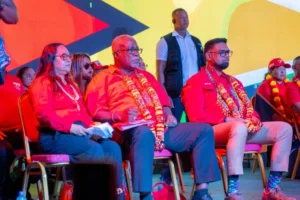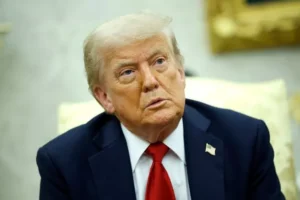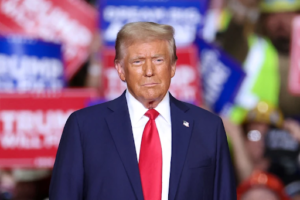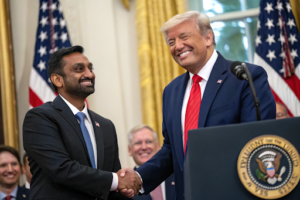Israel and Hamas Reach Gaza Ceasefire and Hostage Deal
In a region often defined by its enduring tensions and cyclical violence , the recent announcement of a ceasefire and hostage deal between Israel and Hamas has sent ripples of cautious optimism around the world . This agreement , forged amid mounting international pressure and humanitarian crises , signifies a temporary halt to one of the most intense escalations in the Israeli Palestinian conflict in recent memory . But what does this deal entail , and what are the potential implications for both sides and the broader region ? Let ’s dive into the details of this pivotal development .
Israel and Hamas Ceasefire : A Fragile Yet Vital Truce
The ceasefire between Israel and Hamas represents a fragile yet essential step toward de escalation . Both parties have agreed to halt military operations , providing a respite to civilians caught in the crossfire . For the people of Gaza , who have endured relentless airstrikes and blockades , and for Israeli citizens living under the constant threat of rocket attacks , the cessation of violence offers a much-needed breather .
The agreement is expected to hold for a specified period , though the duration and enforcement mechanisms remain under scrutiny . Historically , such ceasefires have been precarious , with violations often plunging the region back into violence . However , this time , the inclusion of a hostage deal adds an extra layer of commitment , raising hopes that the truce might endure longer than previous attempts .
The Hostage Deal : A Key Component of the Agreement
Central to this ceasefire agreement is the deal to release hostages held by Hamas in exchange for Palestinian detainees in Israeli prisons . This hostage swap is not just a humanitarian gesture but also a strategic move for both sides .
Hamas has been holding dozens of Israeli hostages , including women and children, in Gaza. These individuals were abducted during the recent escalation in hostilities . Their release , facilitated by international mediators such as Egypt and Qatar , is seen as a critical breakthrough .
On the other hand , Israel has agreed to release a significant number of Palestinian prisoners, many of whom have been detained without trial under administrative detention laws . For Palestinians , these prisoners are often regarded as symbols of resistance , making their release a major concession by Israel .
International Mediation : The Driving Force Behind the Deal
This agreement did not materialize in a vacuum . International mediators, including the United Nations , the United States , Egypt , and Qatar , played a pivotal role in brokering the ceasefire and hostage deal . The growing humanitarian crisis in Gaza , coupled with international calls for a halt to the violence , created a conducive environment for negotiations .
U.S. President Joe Biden , alongside other world leaders, emphasized the urgent need for a ceasefire to prevent further loss of innocent lives . Egypt and Qatar , with their established channels of communication with Hamas, acted as key intermediaries , facilitating back-and-forth discussions between the two sides .
Humanitarian Concerns in Gaza Amid the Ceasefire
The humanitarian situation in Gaza has been catastrophic , with thousands of civilians killed or injured during the recent escalation . Homes, schools , and hospitals have been reduced to rubble , and the blockade has severely restricted access to essential supplies such as food , medicine , and clean water .
The ceasefire offers a glimmer of hope for humanitarian relief efforts . Aid organizations can now operate more freely to deliver much-needed assistance to the people of Gaza . However , logistical challenges and the sheer scale of the destruction pose significant hurdles .
Israel’s Perspective on the Ceasefire and Hostage Deal
For Israel , the ceasefire and hostage deal are both a tactical and strategic maneuver . Securing the release of Israeli hostages is a top priority , and the agreement allows the government to demonstrate its commitment to protecting its citizens .
At the same time , the truce provides Israel with an opportunity to reassess its military strategy and mitigate international criticism over its military actions in Gaza . Israeli Prime Minister Benjamin Netanyahu has emphasized that the country retains the right to respond if Hamas violates the ceasefire , underscoring the conditional nature of the agreement .
Hamas’s Gains from the Agreement
From Hamas ’s perspective , the deal represents a political and symbolic victory. The release of Palestinian prisoners bolsters its standing among Palestinians , particularly in the West Bank and Gaza , where such gestures are celebrated as triumphs of resistance .
Moreover , the ceasefire allows Hamas to regroup and rebuild its resources , which were significantly depleted during the recent conflict . The movement ’s leadership has framed the agreement as a testament to its negotiating power and resilience in the face of Israeli military superiority .
The Role of Regional Actors in the Ceasefire
Egypt and Qatar have once again proven their indispensability in mediating conflicts in the region . Egypt ’s geographical proximity to Gaza and its influence over Hamas have made it a key player in facilitating ceasefire agreements . Qatar ’s financial support for Gaza and its open channels with Hamas have also been instrumental in bridging gaps between the conflicting parties .
These regional actors are likely to remain heavily involved in monitoring the implementation of the agreement , ensuring that both sides adhere to the terms .
Challenges to Sustaining the Ceasefire
Despite the optimism surrounding the ceasefire and hostage deal , several challenges loom large . Trust between Israel and Hamas remains virtually nonexistent , and any minor provocation could reignite hostilities . The lack of a comprehensive political solution to the Israeli Palestinian conflict further undermines the long term viability of such agreements .
Additionally , the deal does not address underlying issues such as the blockade on Gaza, the status of Palestinian refugees , or the broader aspirations for statehood . Without meaningful progress on these fronts , the ceasefire risks being a temporary band aid rather than a lasting solution .
The Global Response to the Agreement
The international community has largely welcomed the ceasefire and hostage deal, viewing it as a rare moment of cooperation in a protracted conflict . Leaders from the U.N . , E.U . , and various countries have called for the truce to pave the way for renewed peace talks .
However , activists and human rights organizations have also urged both sides to address the root causes of the conflict , emphasizing the need for justice , equality , and the protection of human rights .
The Way Forward : Can This Deal Lead to Peace?
While the ceasefire and hostage deal are undoubtedly significant , they represent only a small step toward resolving the broader Israeli Palestinian conflict . Sustainable peace requires addressing deep seated grievances , ending the cycle of violence , and fostering dialogue between the two sides .
The current agreement , though fragile , provides an opportunity to pause , reflect , and explore pathways toward a more just and peaceful future . Whether this opportunity will be seized or squandered remains to be seen .

















